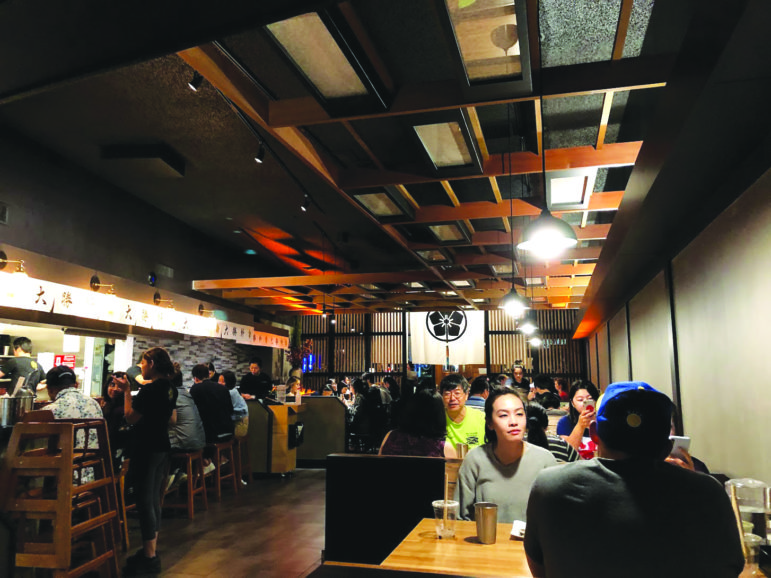
Taishoken Ramen offers a variety of options, such as vegan ramen.

First opened in 1951 in Japan by Masayasu Sakaguchi, Taishoken Ramen celebrated its first U.S. location in San Mateo. Credited with the creation of “tsukemen,” Taishoken quickly became a frequent stop for hungry commuters and has only grown in popularity since.
The dipping style of ramen involves a bowl of cold noodles and a separate bowl of hot broth in which the noodles are dipped. The broth is thicker than most traditional ramen broths, and the “deconstructed” ramen makes the noodles more flavorful. Once done with the noodles, a thinner broth can be added to the dipping base to allow for a refreshing finish to the dish.
The wait is excessive, though, as I had to wait an hour and a half to get seated. I would suggest that you come an hour early to get yourself on the waitlist, which can be long (there were around 70 parties on the list when I arrived).
The restaurant itself is small, with wooden tables hugging the walls as well as raised booths facing the kitchen. The staff was welcoming and quickly adjusted to my needs. As a vegetarian, going into a ramen restaurant can feel intimidating. With only one real main vegetarian dish on the menu, there aren’t many options for those with special diets.
“The wait is excessive though, as I had to wait an hour and a half to get seated”
The main dishes are a little costly, although they are not much more than what you would expect from a ramen restaurant at around $12 to $17. The expenses start piling up if you decide to add extra toppings, around $2 each. The appetizers are where the prices seem to kind of get a bit more expensive, costing up to $8.

I ordered two appetizers, the edamame and the cucumbers, and a Vegan Ramen. I honestly didn’t really expect much, as most vegetarian ramen that I have had generally lacked flavor.
The appetizers were tasteful and had a nice flavor, allowing for a satisfying snack before the main course although they weren’t worth the quantity that was given.
Even if Taishoken only offers one type of vegetarian ramen, they surprisingly find a way to satisfy you with one dish. The toppings themselves were pretty basic and somewhat mediocre and didn’t really add anything to the dish.
The broth itself was lighter than conventional broths that have bolder flavors. The lightness of the broth, however, actually compliments the dish itself, not overpowering the other ingredients.
There are two types of noodles that can be ordered at Taishoken, the thinner wheat noodles used for the traditional ramen, and the thicker buckwheat noodles that are used in the tsukemen. The noodles were what set this restaurant apart from other ramen restaurants I have been to. They were firm and springy, and are made fresh at the restaurant which gives them that nice, chewy texture.

With its different spin on the traditional ramen, Taishoken mixes the familiar ramen dining style with its own twist on the popular dish. Taishoken is a place one can go to have a fabulous ramen experience, but not much else. Besides the ramen, Taishoken lacks much variety in its food and has a small, select menu with only a few types of dishes. However, with a compact menu comes a mastery of the dish, even all this way from Japan.





